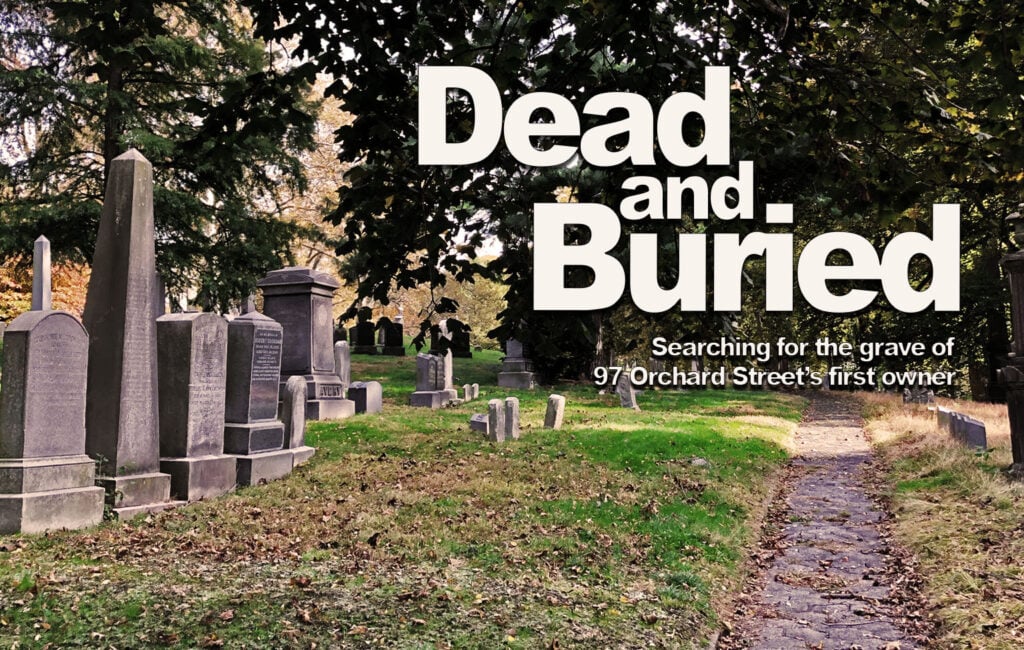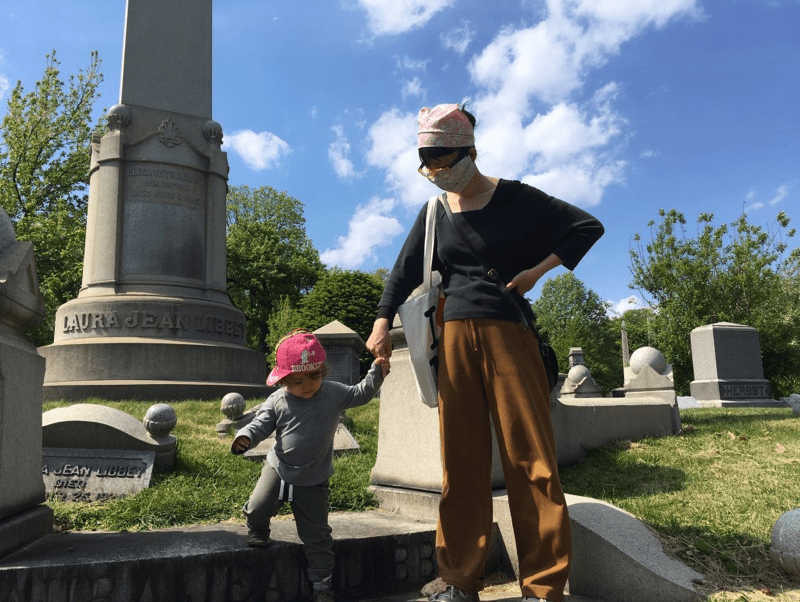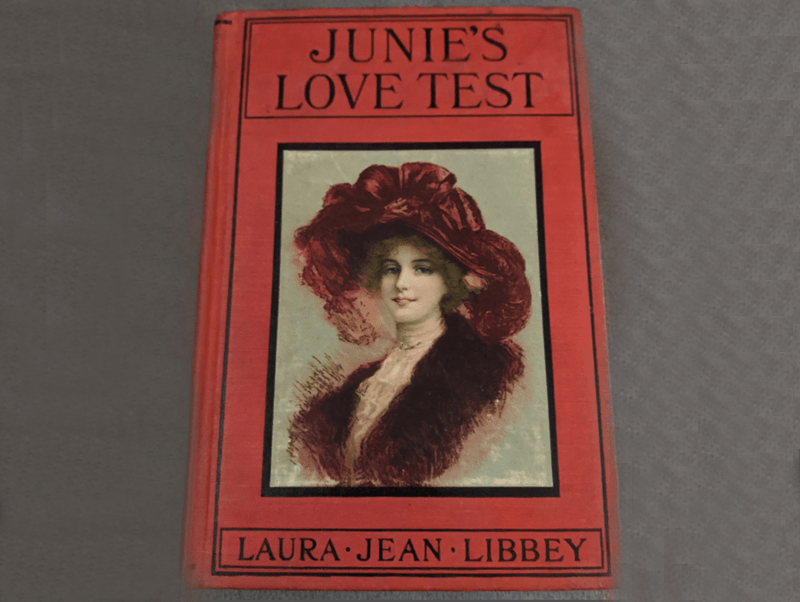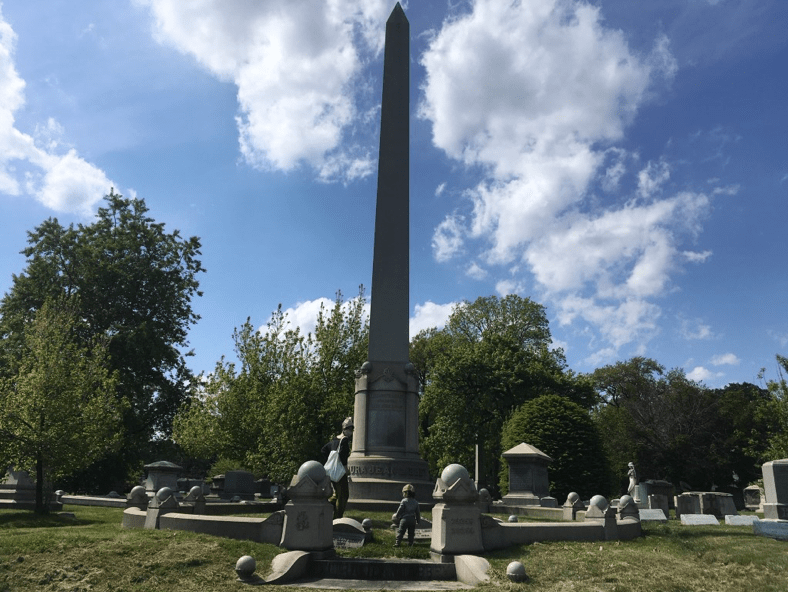This is part one of a four-part series documenting the search for the grave of 97 Orchard Street’s first landlord, Lucas Glockner, in Green-Wood Cemetery, a 478-acre cemetery in Brooklyn that opened in 1838.
Great Reads
Dead and Buried Part I: The Forgotten
July 1, 2020

“Well, do you know the year your party died?” the cemetery guard asked. He spoke to us without opening the window of his kiosk.
Taken out of context, this is a strange question.
“1891” I said, shouting through my mask and the plexiglass. “I tried using the online database and he’s not in there, so I thought I’d ask if you knew.”
“1891…That’s why you couldn’t find him. 1891 is from back in the day, and for that you have to go to the main office.”
My partner asked, “Are your offices still open during this crisis?”
“Yeah, because… you know… people are getting buried here.”
We are in Green-Wood Cemetery, searching for the final resting place of Lucas Glockner, the original owner and person responsible for constructing the tenement located at 97 Orchard Street. Today, it is the address of the Tenement Museum and my place of employment for over a decade.
The Fort Hamilton gate of Green-Wood Cemetery is one block away from where my family lives, and we are truly fortunate that they have expanded access to their grounds during the week. The dead are quiet neighbors and they dwell in an incredible landscape. Since “the pause” started, this has been our refuge.

My 21-month old daughter loves coming here. “Ball!” she shouts, leading us on a walking tour in search of graves topped with stone balls. We stop along the way for her to pick up sticks and tell us about what she sees. We also stop for the security cars, and landscaping trucks, and cars full of people who got lost on the winding roads, and cars with solitary mourners.
Taking into account that this a place for the dead, it’s bustling with life. Except for the office – which is closed because it’s Sunday. We can wait. It’s not like Glockner is going anywhere. And besides, we’re in the middle of a tour.
We follow my daughter’s lead and I begin to think about memory. I recall seeing a burial document for Glockner in the Musuem archives, indicating he was interred here. In the span of 12 years of working for the Tenement Museum, I’ve conjured Glockner’s name over a million times. Are we really neighbors?
“Ball!” My daughter pulls us toward her favorite spot- the grave of Laura Jean Libbey, adorned with over 20 stone balls. Largely forgotten, Libbey rose to fame in the 1880’s and 1890’s as the prolific author of dime romance novels. Her narratives highlight the adventures of virginal young women who endure a series of perilous tests and in the end are swept away by a handsome male character (who is above her social caste, but otherwise lacks substance).

To young working-class women yearning for escape, these dime novels held an almost magical power. Immigrant teenagers comprised the bulk of her readership, and despite the stories being predictable, these women read dime novels compulsively. They read collectively on breaks in the factories where they worked, and privately in the crowded tenements where they lived – like 97 Orchard.
By 1886, the year Glockner sold his building, Libbey’s career was nearing its peak. That year alone she published three novels. Libbey was writing at the pace of a chapter a day and as quickly as her work was published, it was devoured by readers whose daily hardships made them hungry for a happy ending. In 1898, Libbey put a sudden end to her romance writing career. While she went on to write over 100 plays, not a single one of them made it to the stage, and though she secured a position as advice columnist for the New York Mail, her Victorian style and recommendations no longer resonated with contemporary readers. The column simply faded away unnoticed… as did Libbey herself, the once famous novelist who died on October 25, 1924. The world moved on.

“Ball!” Our daughter brings us up the steps leading to the inner circle of Libbey’s monument. She is buried alongside her mother, at the foot of a central obelisk, and surrounded by a ring of stone balls. It is a glorious celebration of life and you get the sense that it memorializes an important person. Staring up at the obelisk, I wonder what kind of monuments mark the striving passionate readers of Libbey’s dime romance novels. Can we still read the names on their headstones?
The monument for these women probably isn’t in Green-Wood Cemetery. Perhaps it is on the Lower East Side at 97 Orchard – the tenement that Glockner built, still standing for generations.
I am intimately familiar with 97 Orchard, and I’m curious about the monument Lucas Glockner made for himself here – if he’s here at all.
Continued in Dead and Buried Part II: The Lost…